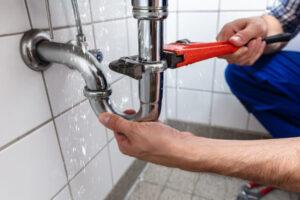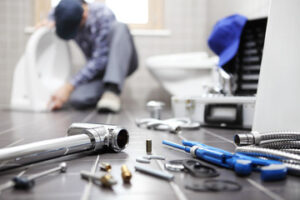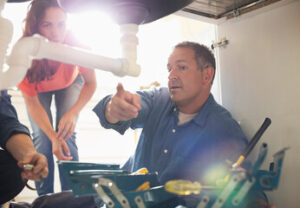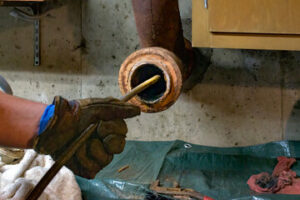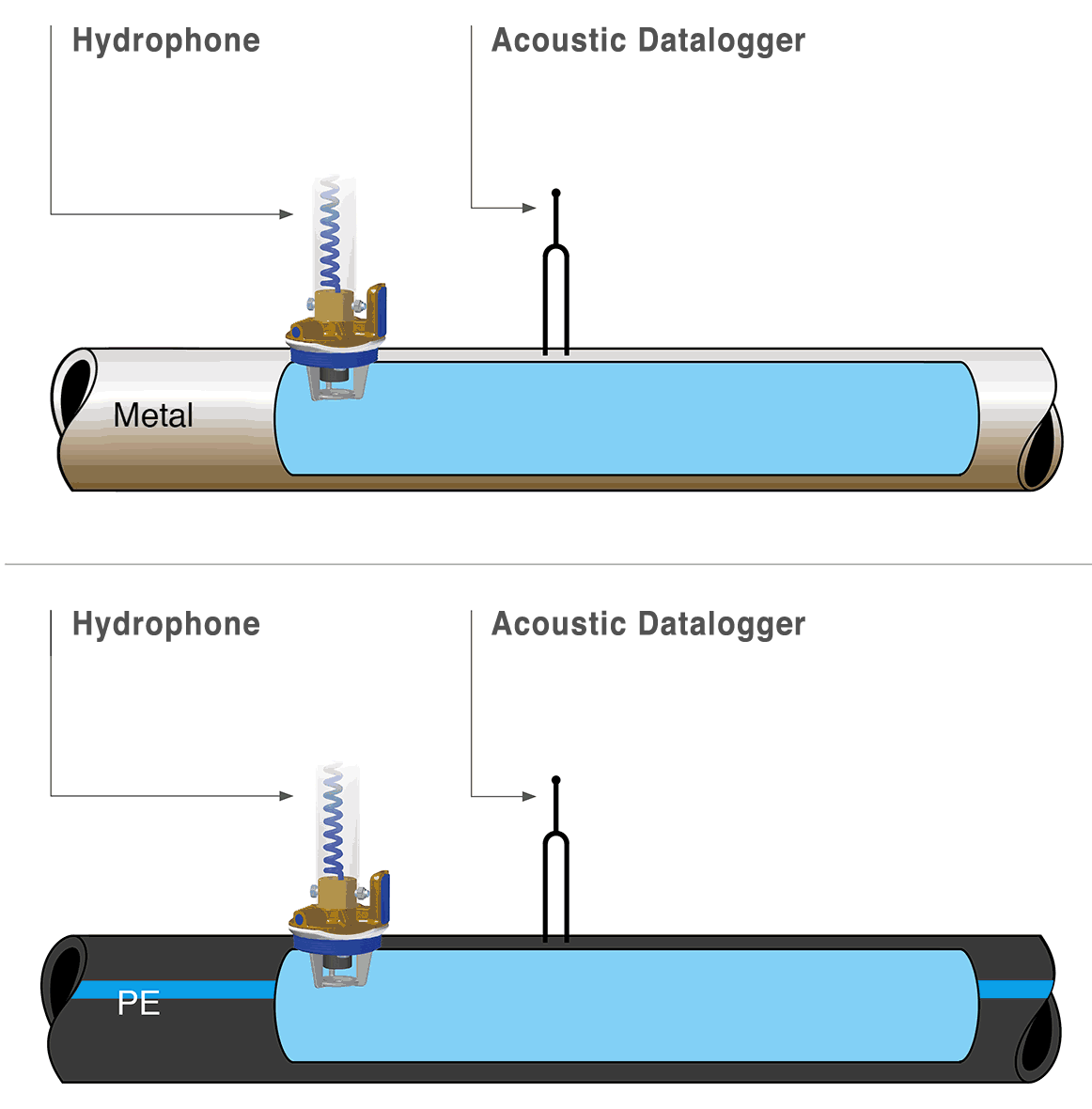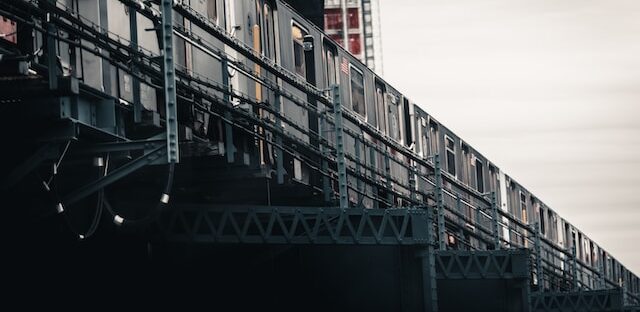Drain Cleaning Philadelphia PA removes the clogs and foul odors that can plague your home. It also prevents expensive repairs required when a clog leads to water damage.
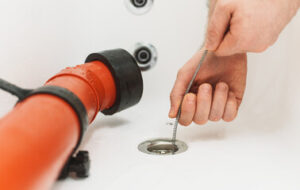
A hydro-jet is a plumbing tool that uses powerful water pressure to blast through and remove all types of debris from pipes. This type of cleaner is beneficial for cleaning grease and oil from the insides of a pipe.
Your showers, toilets, and sinks send a lot of debris through your pipes each day. Hair, soap scum, food particles, grease, and other materials can build up over time and lead to a serious drain clog. Regular drain cleaning helps to keep these issues at bay so that your home’s plumbing system continues to work as it should.
If you notice that one or more of your drains is slowing down or completely blocked, it’s time to call in a professional for drain cleaning. While you can do a lot to help keep your drains clear, such as only using biodegradable cleaning products and taking care not to flush items down the toilet that don’t belong there (like wipes, paper towels, and feminine hygiene products), sometimes drains will need professional attention.
When your drains are fully or partially clogged, it can cause run-on problems that impact the entire plumbing system. For example, if waste and water can’t flow properly through the pipes, your whole house may experience low or no water pressure. Moreover, if you have a sewer clog, you could be exposed to raw sewage, which poses major health and safety concerns.
Clogged drains can also be a breeding ground for bacteria. When they sit for too long, they can become full of feces, bacteria, and other debris that can enter the drinking water supply and make you and your family sick. A bacterial buildup can even contaminate your entire home, causing severe damage and expensive repairs.
The drainage system in your home is connected to the main sewer line in the street, so all of the waste and debris that goes down your drains eventually travels out to the river or sea. This causes environmental issues and endangers marine wildlife. Drain cleaning services can help to reduce the amount of debris that ends up in the main sewer lines, reducing these risks.
A well-maintained drain system can protect the plumbing pipes in your home, saving you from expensive repair and replacement costs down the road. It can also save you from unpleasant odors, blockages, and backups that can impact your daily life and your home’s plumbing performance.
Bacteria Growth
The organic matter that accumulates in your drains can promote the growth of bacteria. If this bacteria goes untreated, it can lead to a number of health issues in your home. It can also lead to clogged and slow-draining drains, and may even cause your septic system to overflow. In addition, bacterial contamination in your home’s water supply can cause diarrhea, fever, and a gastrointestinal illness called campylobacteriosis or typhoid. It can also cause respiratory problems like bronchitis and pneumonia.
In addition, bacterial growth in your drains can create a breeding ground for insects such as mosquitoes. Cockroaches commonly live and lay their eggs in clogged kitchen drains, while moth flies, fruit flies, and drain flies love to breed in the rotting food debris that often finds its way into your kitchen sink. Unclogging and thoroughly cleaning your drains can help to prevent these pests from breeding inside them.
One of the biggest factors in preventing this problem is avoiding chemical drain cleaners, which can be very toxic to humans and pipes. Most of these chemical cleaners are caustic, which means that they can irritate the skin and eyes when inhaled or touched. They can also corrode your pipes, which can require expensive repair or replacement. Many of these products also contain hydrochloric acid, which can kill the bacteria in your septic tank and cause it to overflow.
Alternative drain cleaners, such as bacterial and enzyme-based products, are less harmful to people and pipes. These cleaners work by breaking down organic material such as hair, food, and grease through a chemical reaction with the material. They typically have a much lower pH than traditional drain cleaners, and they may be labeled as “earth-friendly” or “biodegradable.”
The EPA’s Safer Choice program offers a list of products that are considered to be safer for the environment and human use than conventional chemical drain cleaners. These cleaners are formulated with naturally-occurring microbes such as bacteria that can remove a wide range of contaminants and blockages. The microbial products on this list are often more effective than chemical cleaners at cleaning your pipes and drains, and they are generally less expensive.
Odors
Sometimes, odors from a drain may give off warning signs that your plumbing system isn’t working properly. If you’re noticing an unpleasant smell when running water in your sink, the issue is most likely that one or more of your drains are blocked with a grimy buildup of food or other debris. If this is the case, a professional drain cleaner can help you eliminate the odor and clean the pipe so it can work as intended.
If your drain is smelling but not clogged, you can try to deodorize it using simple home remedies. One of the simplest solutions involves baking soda. Baking soda absorbs and neutralizes odors, making it an effective way to keep your kitchen and bathroom drains smelling fresh. You can sprinkle a little baking soda down the drain each night before you go to bed, and let it sit overnight. Alternatively, you can mix a solution of equal parts baking soda and vinegar, pour it down the drain, wait for it to fizz, and then rinse it down with boiling hot water.
Another option is to use a natural product like Turbo foam. This drain cleaning product is safe and easy to use, and it doesn’t contain any harsh chemicals that could damage your pipes or pollute the environment. Its unique formula works to break down and dissolve a variety of different materials, including hair, soap scum, grease, food, and other residues. After it’s flushed out of your pipes, it leaves behind a fresh, pleasant scent that lasts for months.
For a more stubborn clog, you can pour a cup of hot water down the drain to loosen any gunk that’s built up. This can also help clear up minor odors. If you’re experiencing a serious foul odor, it’s important to call in a professional to investigate the cause and address it immediately.
It’s important to clean your drain regularly to prevent a buildup of debris that can cause foul odors. Regular drain cleaning can be done with basic ingredients like baking soda, lemon juice, and commercial products. Be sure to follow the directions on the label when using these methods, and be sure to use a drain cleaner that’s safe for your pipes.
Slow Drains
The drains in your home take on a heavy load every day. That includes grease, soap scum, food particles, hair and more. If these are not properly cared for, they can start to build up and cause problems. Slow drains are one of the most common signs of a build-up and should be addressed as soon as they are noticed. Otherwise, they may become full-on clogs and prevent water and waste from flowing through your pipe system.
A clog can be minor or major and affect any drain or pipe in your home. It is important to get it fixed as soon as you notice it so that it doesn’t worsen and lead to even more costly repairs.
For minor clogs, you can try a few DIY hacks that will help to clear the blockage without chemicals. One option is to pour boiling water down the drain to loosen and flush away debris. This can be especially effective in kitchen sinks that often suffer from grease clogs. Another option is to use a drain plunger. You can purchase a special type that is designed for this purpose or you can use an ordinary household plunger.
If these methods are not successful, you may need a more extensive professional solution. This is particularly true if your slow drains are related to a problem in the main sewer line or your septic system. These are typically more difficult to address, but you should not delay as they can create serious and costly damage to your property.
When a drain is slow to move, it can create a breeding ground for bacteria and lead to unpleasant smells in your home. It is crucial to schedule regular drain cleaning and maintenance services to avoid these problems. This is much like going to the dentist for routine care that keeps your teeth strong and healthy.
If you have slow or sluggish drains in your home, contact a local plumbing service to schedule a professional drain cleaning. This will ensure your drains are free of clogs, debris and bacteria and can function properly.
